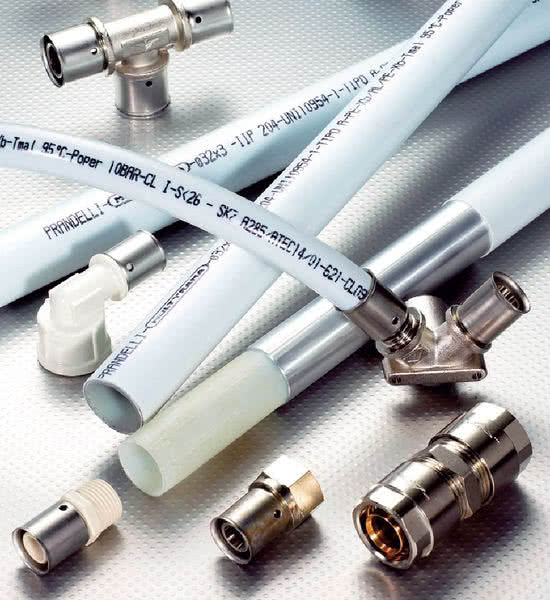 Without soldering, Plastic pipelines can be welded or glued quickly, clean and easy to lay.
Without soldering, Plastic pipelines can be welded or glued quickly, clean and easy to lay.
Plastic piping systems are becoming lead, Steel and copper pipes referred to as the fourth generation of plumbing. The plastic used for this, cross-linked polyethylene (PE-Xc), is not inferior to metal pipes in terms of durability or material properties. In fact, plastic pipes offer a whole range of important advantages.
seal of quality
In the case of drinking water pipes, all materials are subject to very high technical standards, hygienic and toxicological requirements. Only then are lines permitted, when they pass the test- and registration mark of the German Gas Association- and Wasserfaches e.V. (DVGW) be able to show. In addition to the initial test for approval, the DVGW guidelines prescribe an annual monitoring test for the manufactured products, to guarantee a consistent quality standard of each individual part. In addition to the purely technical material tests according to DIN standards, all parts must also meet the high KTW recommendations (Plastic drinking water recommendations) of the former Federal Health Office.
Freedom from corrosion
Corrosion and deposits are excluded with plastic pipes. Even the most aggressive water quality cannot harm the pipe material. Pitting and rusting through are excluded. In addition, the smooth-walled plastic pipes and the connecting elements do not offer any surfaces for limescale deposits to attack. As a result, the line cross-section and thus the water pressure within the line network remains constant.
Matched Systems
■ To be sure, that pipes, connection- and connecting parts, that you need to renew or expand your pipe network with plastic pipes, match exactly, you should buy them from one manufacturer if possible, who offers a coordinated complete system. Only then is optimal safety guaranteed.
Installation in lightweight walls
Due to their flexibility, plastic pipes are particularly suitable for expanding an existing pipe network, if a guest toilet or a shower is to be installed later or an attic is to be expanded. They can easily be pulled through disused chimney shafts and onto existing steel at any time- or connect copper line networks. In hollow walls and ceilings, the lines can then be laid invisibly and without great effort to the new tapping points.
concealed installation
The pipes and all connectors are designed that way, that they can also be mounted under plaster at any time without any problems. The brass connection brackets are inserted into a plastic box and are thus protected from direct contact with plaster or mortar. The flexible plastic pipes are designed according to the pipe-in-pipe system.
The water-carrying pipe is running, similar in the electrical installation, in a protective tube. This has several advantages at the same time. If a pipe is accidentally drilled, it can be pulled out from a tap and a new one pushed in through the protective tube, without the wall having to be pried open over the entire length of the line. In addition, the air in the protective tube forms an insulation, prevents the formation of condensation. At the same time, the flow noises that are common in metal pipes are reduced, because there is no direct material contact with the wall.
Prevent damage with laying plans
■ Kunststoffrohre sind nicht mit dem Metalldetektor zu orten. In order to avoid, that at some point a line is accidentally drilled into, is it recommendable, create a layout plan during assembly. You can also write the measurements directly on the wall and then photograph them piece by piece. In later drilling work, the laying paths of the pipes can be reconstructed. This saves a lot of work and trouble.
Vielen Dank für diesen Tipp. Das ist wirklich ein sehr interessanter Artikel. Kunststoff hatte ich für dieses Anwendungsgebiet noch gar nicht erfasst. Ist es ausgeschlossen, dass es zu Kunststoffablagerungen im Trinkwasser kommen kann? Außerdem interessiere ich mich sehr für Anbieter von solchen Leitungen. Bei meiner Recherche bin auf Technoform aufmerksam geworden. Ist dies ein Anbieter, der Lösungen für diesen Bereich bietet?
Thanks and best regards,
Frank